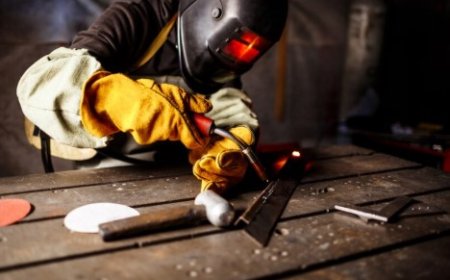Hidden Termite Damage: Why You Shouldn’t Wait for Visible Signs

Introduction
Termites are quiet workers. They move through soil, crawl behind walls, and feed inside beams long before a homeowner notices that something is wrong. That silence is what makes them dangerous. By the time visible signs show up, thousands of dollars in damage may already be done.
Most people expect termites to leave a clear trail, but the early stages rarely look dramatic. What seems like mild wear or harmless dust might be part of a much bigger issue. This gap between what you can see and what termites actually do is why early action matters so much.
Waiting for visible signs is like waiting for smoke before checking if a fire has started inside the walls. Once it becomes obvious, it's usually too late for small repairs.
Early Warning Signs That Point to Trouble
Termites prefer to stay hidden, but they still leave clues. The trouble is these clues blend in with normal household wear. You might notice soft wood that dents when pressed, faint clicking inside walls, or small piles of what looks like sawdust near windowsills. These tiny details often indicate activity behind the surface.
Small cracks in drywall, loose tiles, or doors that suddenly stick are also red flags. Termites weaken structural material from the inside, which changes how your home settles. Homeowners often blame humidity or aging materials, not realizing termites are the real cause.
If you're in Idaho and you see unusual wood damage or soil pathways near your foundation, getting help from Idaho pest control experts can stop the problem before it spreads further.
Another telling sign is discarded wings near vents or window frames. These are left behind after swarmers take flight, which means a colony is already active nearby. Even a single pile of wings signals that things may be progressing faster than you think.
Why Professional Detection Matters
Termites hide in places you rarely check. DIY inspections might catch surface clues, but the real activity is behind studs, flooring, crawlspaces, and support beams. Professionals know where termites travel, how they behave in different seasons, and which entry points they prefer.
Early detection saves money because it stops the colony before it grows. Colonies that are a year old behave differently from colonies that have been feeding for five years. The larger the colony, the more intense the treatment and repairs.
Another advantage of professional inspections is accuracy. A trained inspector can tell the difference between termite activity and routine wear. Misreading the signs wastes time and allows more damage to occur.
Regional Behavior That Influences Termite Spread
Your location affects the type of termites you deal with and how quickly they move. In cooler states like Idaho, subterranean termites are more common. They rely on soil moisture and build long tunnels underground. Because of this, early inspections focus on foundation cracks, moisture levels, and crawlspace conditions.
In warmer regions such as Southern California, termite behavior changes. Drywood termites attack attic beams, window frames, and interior wood far from the soil. They carve tunnels inside wood and leave almost no trace on the outside. Homeowners often discover them only after serious damage has already occurred.
If youre noticing hollow-sounding wood or fine powder-like droppings in coastal areas, getting guidance from a Torrance termite exterminator can help you understand what type of termite you're dealing with and how to stop it.
Climate patterns also play a role. Warm winters lead to longer feeding seasons. Heavy rains push subterranean colonies closer to houses. Dry summers increase the spread of drywood swarmers. These seasonal shifts make early detection even more important.
How Professionals Uncover Hidden Damage
When professionals inspect for termites, they use tools and techniques designed to locate hidden activity. Moisture meters detect damp areas where subterranean termites build tunnels. Thermal cameras highlight temperature differences inside walls that indicate movement or feeding. Sounding tools help identify hollow sections in beams and wooden structures.
The goal is to find the colony, not just the symptoms. Once the nest is identified, the right treatment can be applied. Spot treatments work well for early-stage drywood termites. Soil treatments and bait systems are used for subterranean termites that move through tunnels. Professionals know when each approach is appropriate.
They also examine areas homeowners rarely consider important. That includes fence lines, deck posts, crawlspaces, detached garages, and storage sheds. These structures often serve as the starting point before termites move toward the main house.
Prevention Tips to Avoid Future Damage
After the inspection, prevention becomes much easier. Termites are attracted to moisture, warm wood, and tight hiding spaces. Fixing leaks, improving drainage, and using dehumidifiers can limit their interest in your home. Keeping soil and mulch away from siding removes easy pathways for subterranean termites.
Check firewood piles and outdoor lumber regularly. Store them away from the home so termites dont use them as a bridge. Seal gaps around eaves, vents, and roofing edges to block drywood swarmers from entering.
Routine inspections are the strongest prevention tool. A trained professional can catch termite behavior long before you notice anything. An annual visit costs far less than structural repairs.
Conclusion
Termites are silent, but the damage is never small. By the time signs appear, the colony has usually been feeding for months or even years. Early inspections stop that cycle and protect your home from expensive repairs. If anything looks unusualsoft wood, soil trails, powdery droppings, or discarded wingsgetting a professional opinion right away can save you a lot of trouble.

















